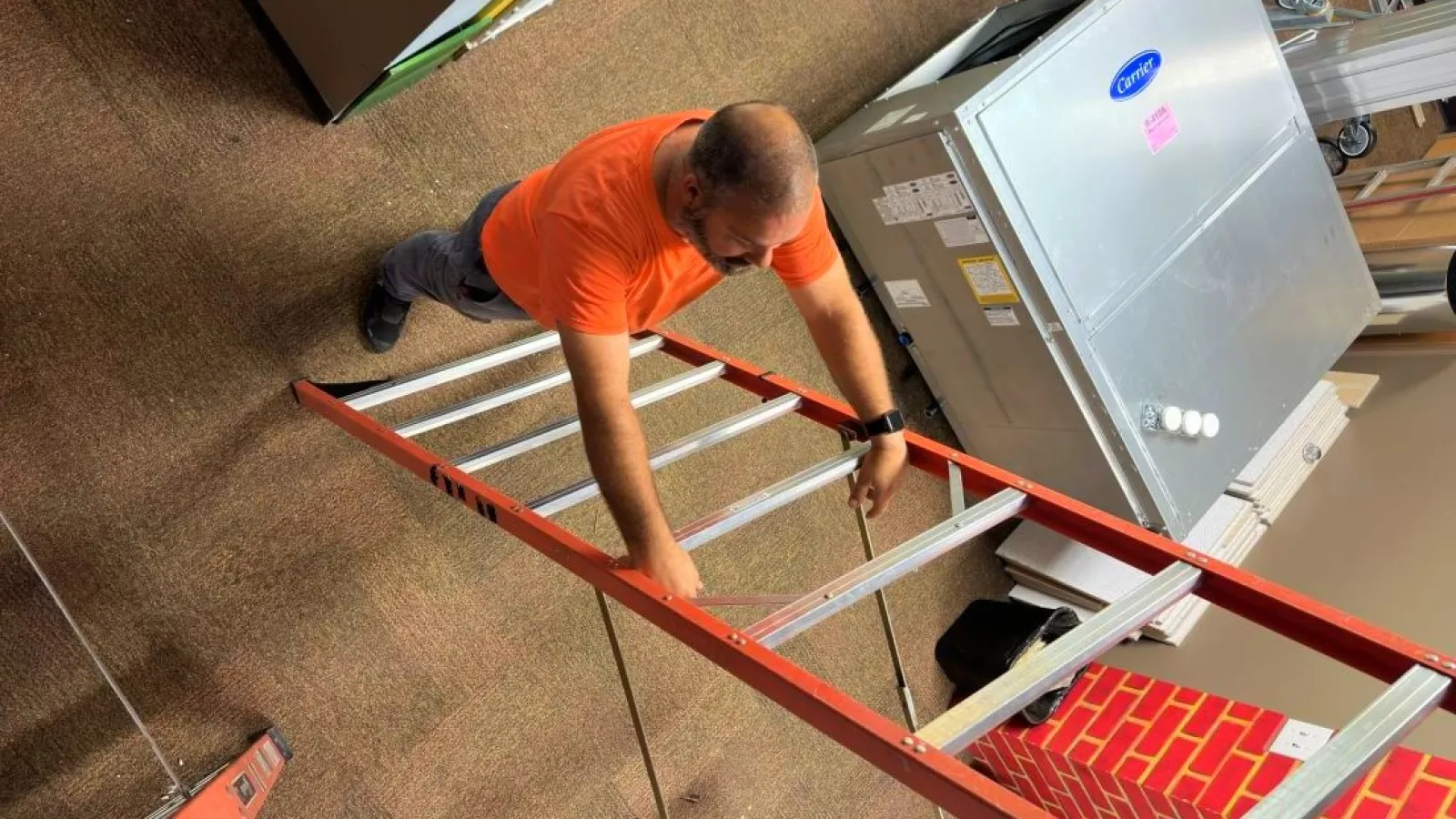Updated July 2019 – An uncomfortable office leads to a number of problems, such as workplace productivity decline, which are costly for employers. Research suggests people work more efficiently and make fewer mistakes when indoor climates are comfortable.
However, what does “comfortable” mean? Temperature and humidity play a great role in comfort. You can better control both with your commercial heating and air conditioning systems.
In this blog, we’ll cover how temperatures affect workers as well as systems designed to improve the comfort and indoor air quality used by commercial HVAC companies to help employers and facility managers.
Frigid or Humid Offices Cause Distractions, Mistakes and Reduced Workplace Productivity
First, let’s consider “comfortable.” Indoor climate regulations are based on a 1960’s empirical thermal comfort model. One of its primary variables is metabolic rate based on an average male. This overestimates the female metabolic rate by as much as 35 percent. This outdated model causes buildings to be naturally non-energy-efficient in providing comfort for females.
A Cornell University study found workers are more productive when workplace temperatures are warmer versus cooler. Keeping the workplace at a warmer temperature in the summer also produces cost savings through energy conservation and reducing errors.
Performed by Dr. Alan Hedge, professor of design and environmental analysis and director of Cornell’s Human Factors and Ergonomics Laboratory, the study focused on female employees in an Orlando, Florida, office space. Their goal was to explore the link between work performance and changes in the physical environment.
Hedge and his team equipped each woman’s desk with equipment to measure the ambient temperature every 15 minutes. Software tracked workplace productivity by measuring typing speeds and errors over 20 consecutive days.
The study concluded employers who keep the workplace at a more comfortable and warmer temperature can save approximately $2 per hour, per employee. Hedge and his team found when the office temperature increased from 68 to 77 degrees Fahrenheit, typing errors fell by 44 percent. Even more impressive, typing output rose by 150 percent.
Commercial HVAC Solution:
Ask a professional commercial HVAC contractor like Estes in Atlanta to perform calculations to right-size your HVAC system for your business or commercial property. The Estes team considers the use and average occupancy for your building to optimize workplace productivity. For example, is it:
- a factory or production line which has a mix of males and females performing active work amongst heat-generating machinery?
- an office, with a majority of women performing light office work?
- a healthcare facility which houses mostly nonambulatory patients, a majority of females or seniors?
- a retail property where employees and customers are generally on their feet and moving?
Boost Heating and Air for a More Productive Workplace
It’s important to balance temperatures for a healthier and more productive workforce. When sized properly for your building, commercial HVAC delivers comfortable temperatures efficiently through all seasons.
Commercial HVAC offers multiple options, including ductless solutions, to boost heating and cooling in certain areas, where lighter activity or desk work takes place. When linked with building automation controls and zoning systems, it’s easy to regulate temperatures for certain zones within your building, based on occupancy and use.
Stale Office Air Smothers Workplace Productivity
Another study, published in the Harvard Business Review, found poor HVAC air quality also contributes to lowered workplace productivity. As a reaction to 1970s conservation efforts, building codes sealed up buildings and reduced ventilation.
This led to the unintended consequence of a build-up of indoor pollution and less “fresh air.” The result is “sick building syndrome,” producing symptoms in occupants including headaches, irritation of the eyes, coughing, and tightness in the chest.
Sick building syndrome is linked to workplace absenteeism, with workers taking time off work to recuperate. Poor HVAC air quality exacerbates the spread of illness from viruses and germs, taking more of your workers off the job due to sickness. This increases healthcare costs, missed deadlines and in some cases, the expense of temporary workers.
The study compared 24 “knowledge workers” (managers, architects, designers, etc.) in highly controlled environments performing their regular duties: first in a conventional space, which met the minimal air quality standards, second in an optimized air quality office.
The optimized office doubled the ventilation (outdoor air) in the space, limited the level of volatile organic compounds (VOCs) and tested levels of carbon dioxide. Scientists tested workers’ decision-making skills using a traditional standardized cognitive function test daily.
The conclusion found breathing better air increased decision-making performance. Scores increased the most when testing how workers used information to make strategic decisions as well as how they plan, stay prepared and problem-solve in a crisis. These skills directly point to workplace productivity in a knowledge economy.
Commercial HVAC Solutions:
The Importance of Ventilation
Commercial ventilation systems work to ward off sick building syndrome and keep your workforce healthier. Exhaust fans pull odors, indoor pollutants and stale air from your work areas. Make-up air units keep air pressure balanced while improving heating and cooling system efficiency.
Commercial ventilation systems keep your building supplied with fresh air. This eliminates the buildup of indoor pollution. The result is fewer irritants, germs and viruses in your workplace. Fewer germs circulating reduces sickness among employees.
Monitor Humidity in Heating and Air
HVAC air quality can further be improved with the help of commercial humidifiers or dehumidifiers. Humidity within a commercial facility can vary, depending on production activities and other factors.
In facilities where hot water or steam is used or a byproduct of production, dehumidifiers remove excess moisture. This prevents the indoor environment from becoming uncomfortably humid.
Excessive humidity makes it feel warmer. It also contributes to the growth of mold, dust mites and other respiratory illness triggers.
Improve Workplace Productivity with Proper Heating and Air
Estes Commercial helps employers create and maintain ideal indoor environments to improve comfort and air quality, as well as increase workplace efficiency and productivity.
Interested in a free estimate customized commercial heating and cooling solutions from our NATE-certified commercial HVAC pros? Contact us today and take the next step toward boosting workplace health, productivity and efficiency.
Our team serves businesses, places of worship, healthcare facilities and other commercial properties around Atlanta, including Buckhead, Midtown, Druid Hills and Dunwoody. You’ll also find Estes Commercial in Marietta, Kennesaw, Johns Creek, Virginia Highland, Decatur, Roswell, Midtown, Peachtree City, and Sandy Springs.


